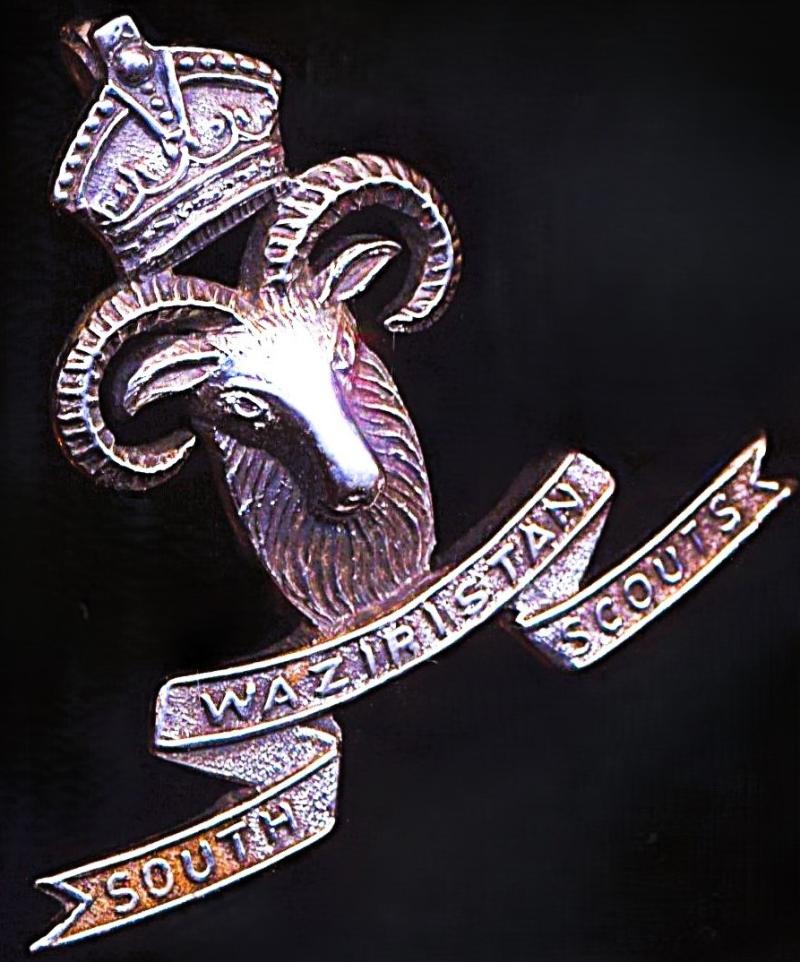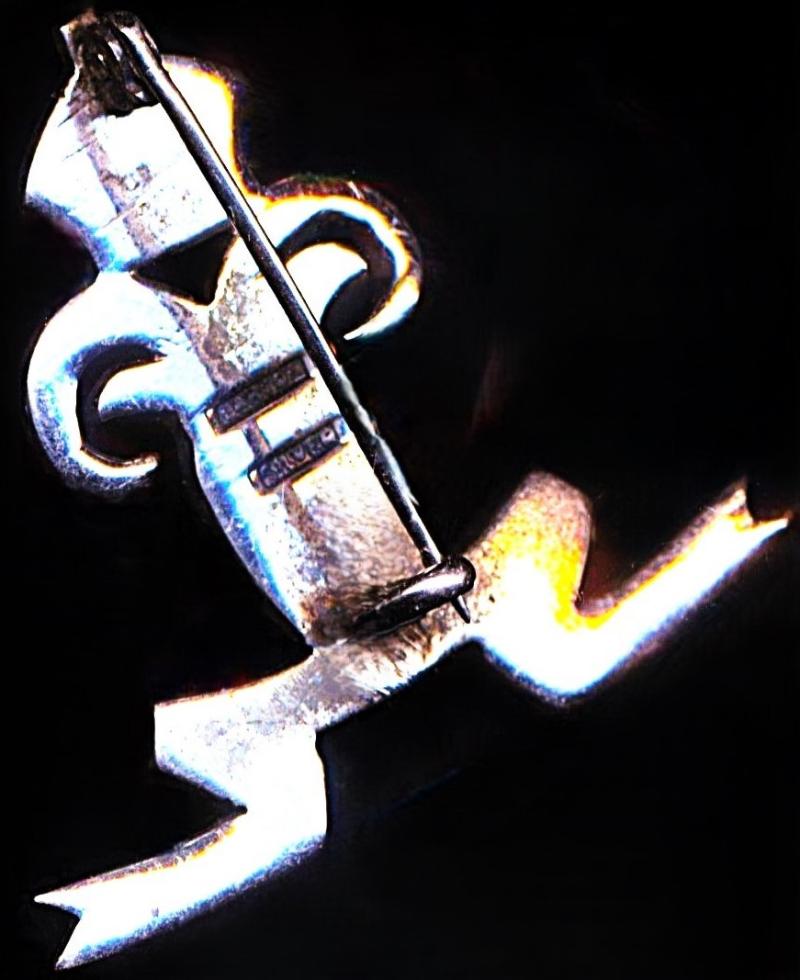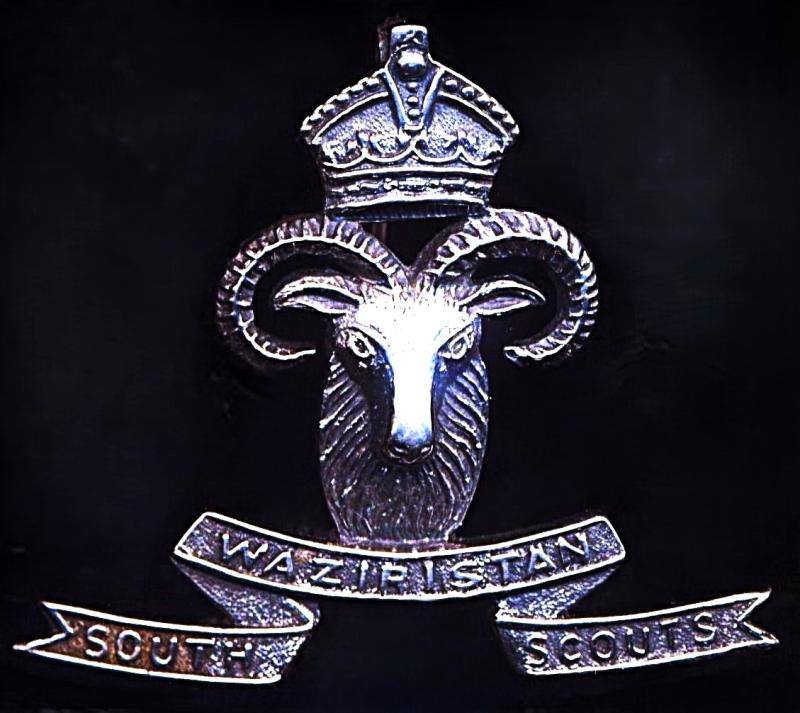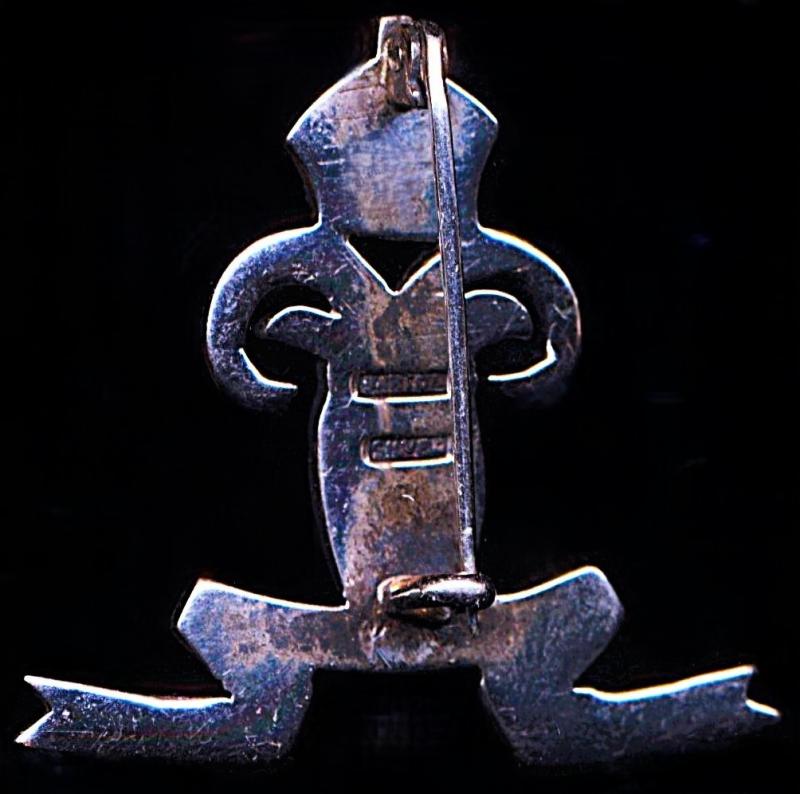British India: South Waziristan Scouts. British Officer's Silver Cap Badge (c.1930-47)
The 'Urial' ram's head surmounted by a crown
The cap badge with makers marks 'Barton / Silver' on reverse
Metal: Silver (maker marked)
Size: 4.5cms
Weight: 12.3g
Fittings: The insignia retaining it's original long vertical hinged pin and clasp fittings
South Waziristan Scouts: Formerly known as the North Waziristan Militia (raised 1900), the 'South Waziristan Scouts' (established in 1922), was one of several 'Frontier Corps' (others included the Tochi Scouts, Chitral Scouts, Gilgit Scouts and the Kurram and Zhob Militias) that were stablished in the early 20th century, for exclusive service within the defined territories inside the 'Tribal Territory' of the North West Frontier of British India. The 'SWS' operated in the Southern Waziristan tribal area of the North West Frontier of British India - the homeland of the 'Mahsud' Pathan clans. Considered a 'Corps de Elite', by the British Officers of the Indian Army who served on attachment with the South Waziristan Scouts, those fortunate to serve with the SWS, had a well earned reputation for their bravado with a swagger borne of their unconventional life experiences on the North West Frontier, almost in the mirror image of the 'Wolf of Kabul', the popular comic hero character of the inter-war years. The popular image of being a SWS Officer, is best summed up in the rivalry that existed between them and the Officers of the Tochi Scouts. 'The Frontier Scouts' (Charles Chenevix Trench, 1985), refers:
Quote,
The South Waziristan Scouts and the Tochi Scouts each regarded itself as the hardest fighting, longest gashting, deepest drinking corps, raising more hell on leave in Peshawar or Kashmir. The SWS boasted of having bigger mess-bills than any unit in the Empire; but the Tochi drank their beer out of quart-sized silver tankards.
Their style was subtly different. On leave in the Peshawar Club one would see Tochi officers in flannels and 'brothel-creepers', but SWS officers in mazri shirts and heavy chaplis. In efficiency there was nothing to choose between them; but the Tochi were the more relaxed, they had more social contacts with the tribesmen; the SWS, perhaps because they had Mahsuds to deal with, were the more 'regimental', the more aggressively on their toes, a tauter ship. Also, according to the Tochi, they were more addicted to bullshit : 'the sort of fellows who wear posteens in Delhi'.
Unquote.
In a word 'Brilliant'!
Befitting their image and reputations, only the best British India was relied upon to provide the British Officers with their regimental insignia, the cap badges being crafted and supplied by one of the most prominent of jewellers and silversmiths in British India, viz Barton of Bangalore - a company which then as now in 2025, continues to supply bespoke jewellery, insignia and masonic regalia
Barton of Bangalore, made the silver British Officers insignia of the SWS through to 14 August 1947.
A superb and extremely scarce item of British India insignia
Condition: EF
Code: 25593
185.00 GBP






